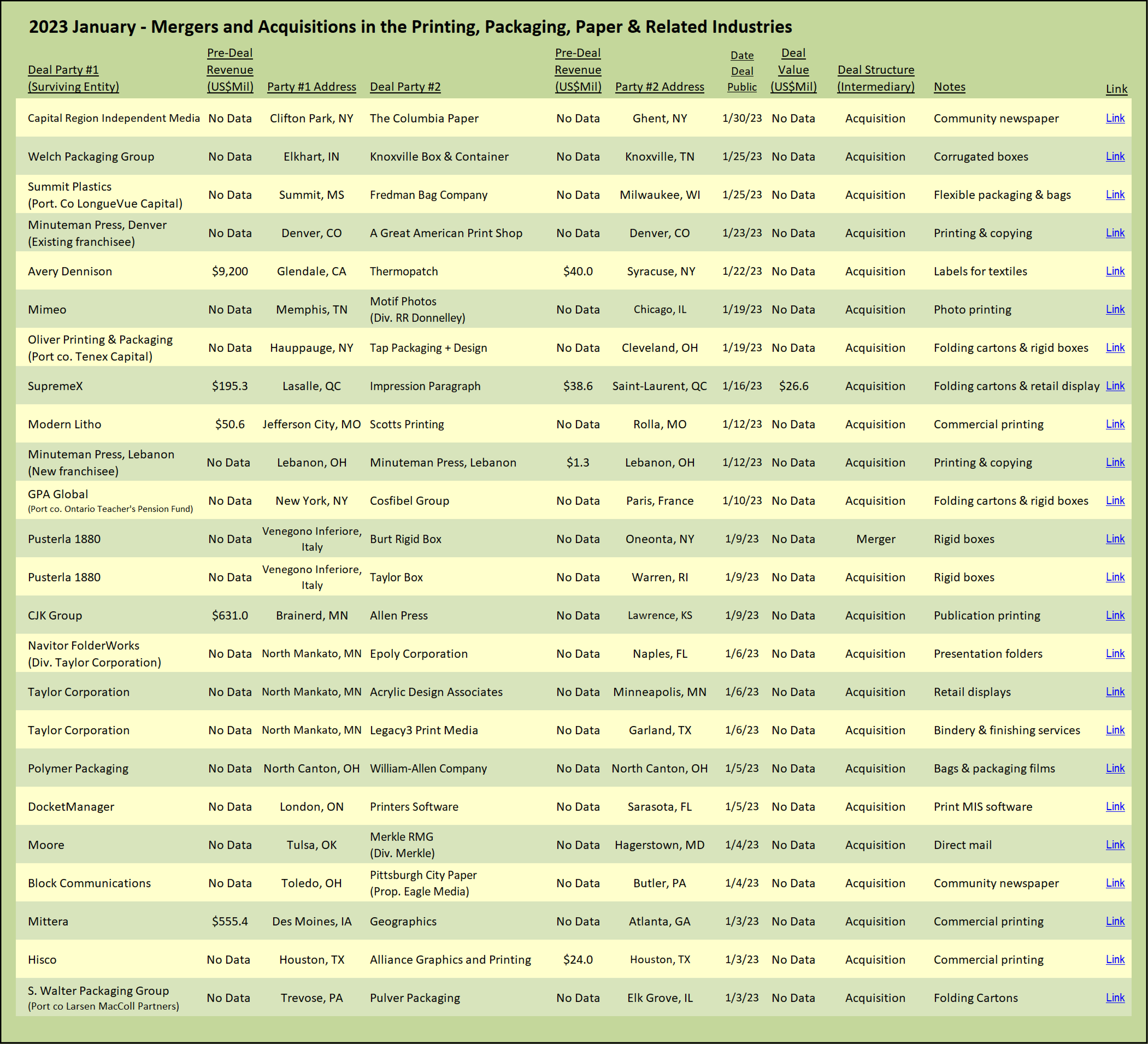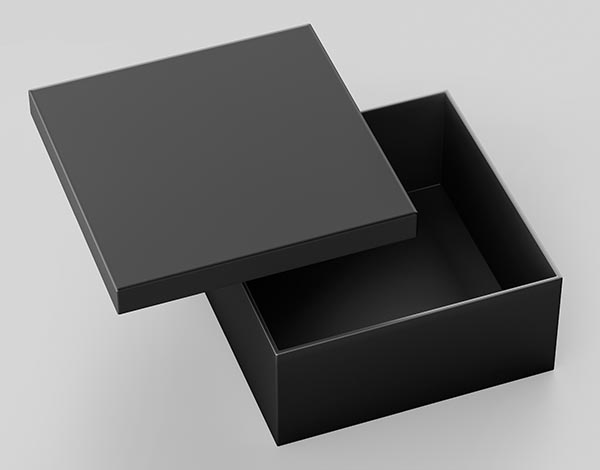
The simple box. We predicted it would happen. The market for box manufacturing has heated up and in the most recent month the purchase of box printing companies has outpaced the number of deals involving label printing companies for the first time in our eleven?plus years of tracking and commenting on M&A activity in the printing, packaging, and related industries. (See Label Roll-Ups are Red Hot; Are Folding Cartons Next? – March 2022.)
The Rigid Box
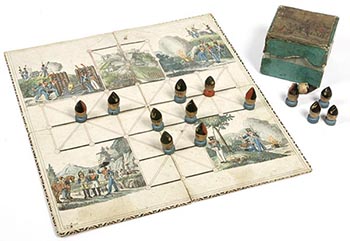 The original fiber-based box, the rigid box, is also known as a set-up box. As the name suggests, in its simplest form, these boxes are formed by wrapping, tucking, and gluing paper around stiff cardboard to form a rigid container that is shipped set up and ready to pack. While it is difficult to pin down the exact origin of the rigid box, several sources point to a German company that in 1817 produced a box to package The Game of Besieging, an early war strategy board game. An alternate history credits the creation of the first commercial paperboard box to an English firm, M. Treverton & Son, curiously asserting that production began in the same year as the German claim, 1817. The rigid box prevailed as the dominant fiber-based box for almost a century. With the advent of more efficient methods of box production around 1900, the rigid box lost its place as the preferred volume utilitarian solution. The rigid box method is now most often used to package luxury and specialty items, highly decorated with foils, coated with gloss and soft-touch finishes, and formed into unique shapes.
The original fiber-based box, the rigid box, is also known as a set-up box. As the name suggests, in its simplest form, these boxes are formed by wrapping, tucking, and gluing paper around stiff cardboard to form a rigid container that is shipped set up and ready to pack. While it is difficult to pin down the exact origin of the rigid box, several sources point to a German company that in 1817 produced a box to package The Game of Besieging, an early war strategy board game. An alternate history credits the creation of the first commercial paperboard box to an English firm, M. Treverton & Son, curiously asserting that production began in the same year as the German claim, 1817. The rigid box prevailed as the dominant fiber-based box for almost a century. With the advent of more efficient methods of box production around 1900, the rigid box lost its place as the preferred volume utilitarian solution. The rigid box method is now most often used to package luxury and specialty items, highly decorated with foils, coated with gloss and soft-touch finishes, and formed into unique shapes.
The Corrugated Box
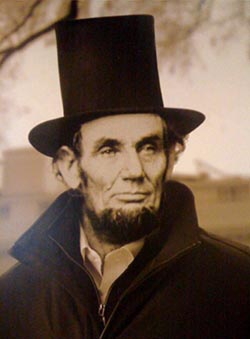 In 1856, tall top hats were the fashion rage for men. Two gentlemen in the hatter trade, Edward G. Healy and Edward E. Allen, resolved to find a material that would maintain the tall shape, yet was flexible to fit individual noggins. The solution they arrived at was to form paper into pleats, giving it a wavy shape for strength. They patented the invention in England, but never made the leap to using their invention to create a shipping box. American ingenuity was behind the next step forward in the form of a US patent filed in 1871 by Albert L. Lyons for “an improvement in paper for packing” which described the use of corrugated, crimped, or bossed forming of paper to create an effective cushion for the contents being packed. Three years later, a machine was made for producing large quantities of corrugated material and that same year another inventor, Oliver Long, added the liner sheet to the second side, trapping the corrugation in the middle, producing the corrugated material we know today. In 1895, the first corrugated box was manufactured in the US, quickly replacing the previously dominant wooden crates and boxes used to ship products.
In 1856, tall top hats were the fashion rage for men. Two gentlemen in the hatter trade, Edward G. Healy and Edward E. Allen, resolved to find a material that would maintain the tall shape, yet was flexible to fit individual noggins. The solution they arrived at was to form paper into pleats, giving it a wavy shape for strength. They patented the invention in England, but never made the leap to using their invention to create a shipping box. American ingenuity was behind the next step forward in the form of a US patent filed in 1871 by Albert L. Lyons for “an improvement in paper for packing” which described the use of corrugated, crimped, or bossed forming of paper to create an effective cushion for the contents being packed. Three years later, a machine was made for producing large quantities of corrugated material and that same year another inventor, Oliver Long, added the liner sheet to the second side, trapping the corrugation in the middle, producing the corrugated material we know today. In 1895, the first corrugated box was manufactured in the US, quickly replacing the previously dominant wooden crates and boxes used to ship products.
The Folding Carton
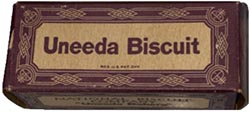 In 1879, Scottish-born immigrant to America Robert Gair was working in his Brooklyn printing company on an order of small seed bags. As the story goes, the diemaker working for Gair did not set a creasing rule correctly, leaving the blade too high. The miscreant die cut through thousands of the seed packets before the error was noticed, and the lot was wasted. In this way, Gair discovered that he could cut and crease paper in one operation. While this seems obvious to us today, at the time the scoring was done on a press and the cutting was accomplished in a separate operation performed on a guillotine cutter. The entrepreneurial lightbulb was lit, and Gair applied his discovery to heavier paperboard. The result was an exponential increase in productivity. The new product was not only faster to produce, but critically could be glued and packed flat for shipping. Final erection and assembly of the box was completed at the factory where the product to be packaged was made and inserted into the box. Early converts to the new mass-produced foldable cartons included the Great Atlantic & Pacific Tea Company, Colgate, Ponds, and tobacco manufacturer P. Lorillard. In 1896, Gair landed an order for two million of his precut, pre-creased cardboard boxes for Uneeda Biscuits from Nabisco, known at the time as the National Biscuit Company. The folding carton rapidly replaced the traditional tin or wooden cracker boxes. Eventually further popularized by Kellogg’s for the sale of cereals to the masses, the folding carton had arrived. Gair went on to great success, eventually building seven large factories in the Dumbo section of Brooklyn, where his name survives even today on several converted factory facades.
In 1879, Scottish-born immigrant to America Robert Gair was working in his Brooklyn printing company on an order of small seed bags. As the story goes, the diemaker working for Gair did not set a creasing rule correctly, leaving the blade too high. The miscreant die cut through thousands of the seed packets before the error was noticed, and the lot was wasted. In this way, Gair discovered that he could cut and crease paper in one operation. While this seems obvious to us today, at the time the scoring was done on a press and the cutting was accomplished in a separate operation performed on a guillotine cutter. The entrepreneurial lightbulb was lit, and Gair applied his discovery to heavier paperboard. The result was an exponential increase in productivity. The new product was not only faster to produce, but critically could be glued and packed flat for shipping. Final erection and assembly of the box was completed at the factory where the product to be packaged was made and inserted into the box. Early converts to the new mass-produced foldable cartons included the Great Atlantic & Pacific Tea Company, Colgate, Ponds, and tobacco manufacturer P. Lorillard. In 1896, Gair landed an order for two million of his precut, pre-creased cardboard boxes for Uneeda Biscuits from Nabisco, known at the time as the National Biscuit Company. The folding carton rapidly replaced the traditional tin or wooden cracker boxes. Eventually further popularized by Kellogg’s for the sale of cereals to the masses, the folding carton had arrived. Gair went on to great success, eventually building seven large factories in the Dumbo section of Brooklyn, where his name survives even today on several converted factory facades.
Boxes of All Kinds
Italian packaging printing company Pusterla 1880 produces high-end packaging for luxury brands in the fragrance, cosmetics, wine & spirits, and gourmet food markets. With established factories in Italy, the UK, Moldova, and Tunisia, the company has entered the US market with the simultaneous purchase of two premium manufacturers of rigid box packaging. Pusterla announced the acquisition of Taylor Box Companyin Warren, Rhode Island, and Burt Rigid Box in Oneonta, New York.
SupremeX, the publicly traded Canadian company with its roots in the envelope manufacturing business, has further extended its reach into the box business with the acquisition of Impression Paragraph, a folding carton printing and manufacturing company with two facilities in Quebec. In addition to the folding carton business, the acquired company also produces retail point-of-sale displays for the cosmetic, pharmaceutical, and food confectionary markets. The acquisition marks Supremex’s fifth move into the folding carton business, following the 2021 acquisition of Vista Graphic Communications in Indianapolis, Indiana,* both acquisitions examples of the company’s laser-focused execution of its strategic diversification plan to acquire packaging companies and supplement its legacy core envelope business. Supremex is not ignoring the envelope business, however, and recently also acquired the business of Royal Envelope with two manufacturing facilities in the greater Chicago area, focusing primarily on higher-end, highly decorated envelopes for the direct mail market.
Oliver Packaging has purchased its first company under the new sponsorship of Tenex Capital, acquiring Tap Packaging + Design. The acquired company produces folding cartons, and in a bit of a departure for Oliver from its core focus on folding cartons, adds rigid boxes and micro flute corrugated packaging to the mix. Tenex Capital purchased Oliver in July 2022 from Pfingsten Partners in what is known in PE circles as a secondary buyout. Purchased by Pfingsten in 2016, Oliver was privately held, owned, and managed in the Cleveland area by four generations of the Oliver family. Oliver Printing, as the company was previously known, had by that time successfully transitioned from its roots as purely a commercial printer to a company with its future focused on folding cartons, including structural design, printing, and finishing. As the first institutional owner of Oliver Printing, Pfingsten proceeded to rebrand the company and bolt on four acquisitions which have transformed Oliver into a national player in the folding carton segment. Those acquisitions included the venerable Disc Graphics on Long Island, New York, where the Oliver Packaging company is now headquartered.
GPA Global announced the acquisition of the Cosfibel Group, headquartered in Paris, France. The acquired company has factories in Spain and Belgium and specializes in serving prestigious high-end brands with rigid box sets, gift packs, secondary packaging and product presentations in the beauty, wine & spirits, gourmet foods, and high fashion markets. Consistent with GPA Global’s strategy of combining in-house manufacturing with outsourced specialty purchasing, Cosfibel touts its “make & trade” approach to fulfilling its customers’ packaging requirements. (See GPA Global Emerges as Packaging Consolidator – December 2021.)
S. Walter Packaging Group, a portfolio company of Larsen MacColl Partners since 2014, acquired Pulver Packaging, a manufacturer of folding cartons in Elk Grove, Illinois. Pulver brings design, sourcing, printing, fabrication, enhancement, warehousing, and inventory management to its new parent. The S. Walter Packaging Group includes a specialty division, Bags & Bows, which serves the retail market with bags, stock size boxes, tissue paper, gift wrap, and as the name suggests, ribbons and bows. Another division, LPI, originally named Letterhead Press, provides highly specialized finishing services including stamping of holographic images, foil stamping, embossing, UV coatings, and production of rigid boxes.
Welch Packaging Group, the roll-up that has focused exclusively on corrugated products, is back in acquisition mode after a two-and-a-half-year pause in M&A activity. Welch just announced the purchase of Knoxville Box and Container, in Knoxville, Tennessee. The acquired company’s product line, corrugated cartons, is consistent with every company that Welch has acquired in the 37 years since the owner established the company with only four employees and rudimentary box-making equipment. With this latest acquisition, Welch Packaging now serves the Midwest and South-Central market from over a dozen manufacturing locations and three distribution centers with over 1,200 employees. (See Catching the Wave in Corrugated Cartons – February 2020).
* Graphic Arts Advisors, publisher of The Target Report, served as exclusive advisors to Vista Graphic Communications in this transaction.
View The Target Report online, complete with deal logs and source links for January 2023

